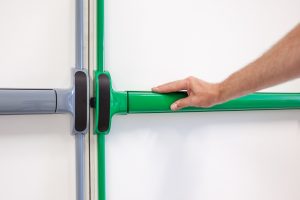What are the ethical obligations of a transactional lawyer embroiled in litigation over the transaction when ordered by the court to turn over for a forensic analysis the hard drive of a computer containing not only information about the client before the court but also confidential information of various other clients? A lawyer facing a court order or a subpoena requiring the disclosure of client confidential information is faced with some complex and fact-intensive questions about how to respond, which are considered in a recent New York State Bar Association ethics opinion (“NYSBA Op. 1239”). Under the facts there, the client involved in the litigation had waived attorney-client privilege and consented to disclosure of confidential information, but the other clients had not.
There is some interesting rules-based history here. Nearly 30 years ago, ABA Formal Opinion 94-385 (“Formal Op. 385”) addressed issues confronted by a lawyer on the business end of such a subpoena or court order. That opinion, which was issued prior to the 2002 amendments to Model Rule 1.6, took the hard-line position that a lawyer was ethically required to seek to limit a subpoena or court order on any legitimate available grounds in order to protect documents deemed confidential under Rule 1.6.
The pre-2002 iteration of Rule 1.6(a) simply stated that a lawyer “shall not reveal information relating to representation of a client unless the client consents after consultation.” Only two exceptions were recognized by then–Rule 1.6(b), neither of which was applicable to the subpoena/court order situation.[1] The Comment to that earlier version of Rule 1.6, but not the blackletter, did recognize that a court order might supersede the lawyer’s obligation of confidentiality; however, Formal Op. 385 proclaimed that a lawyer could not be a “passive bystander” in such circumstances but had to use all legitimate means available to avoid the disclosure:
Only if the lawyer’s efforts are unsuccessful, either in the trial court or in the appellate court (in those jurisdictions where an interlocutory appeal on this issue is permitted), and she is specifically ordered by the court to turn over to the governmental agency documents which, in the lawyer’s opinion, are privileged, may the lawyer do so.
The 2002 amendments to Model Rule 1.6 included a new provision in 1.6(b) providing that “[a] lawyer may reveal information relating to the representation of a client to the extent the lawyer reasonably believes necessary . . . to comply with other law or a court order.” That principle is now enshrined in Model Rule 1.6(b)(6). Notwithstanding this authorization, there remain complex shoals for a lawyer in this situation to navigate.
In 2016, the ABA Standing Committee on Ethics and Professional Responsibility issued Formal Opinion 473 (“Formal Op. 473”), which revised the guidance given in 1994 and confronted the ethical responsibilities regarding confidential client information of a lawyer who is subject to a subpoena. There is no question, as Formal Op. 473 acknowledged, but that the lawyer must obey a court order. (That is true, incidentally, even where the court order is unlawful, as the Supreme Court held years ago in Walker v. City of Birmingham.[2]) The obligation to comply, however, does not foreclose the possibility of taking certain protective actions where required by applicable rules of professional conduct.[3]
As noted above, the proscription in Model Rule 1.6(a) against revealing confidential client information is subject to various exceptions. One of these permits, Rule 1.6(b)(6), allows turning over such information “to comply with . . . a court order” but, as limited by the introductory language of 1.6(b), only “to the extent the lawyer reasonably believes necessary” to so comply. In the situation described, Formal Op. 473 advised that the lawyer, when assessing what information needs to be disclosed and what protective measures may appropriately be undertaken, must consult with the client,[4] as contemplated by Model Rule 1.4.
The details of this consultation can certainly vary with different facts. As is clear from Model Rule 1.6(a), a client (including a former client) may, provided there is informed consent, simply authorize the lawyer to provide the materials sought by the subpoena. The lawyer should, pursuant to the “informed” prong of “informed consent,” be sure to counsel the client on available privilege and work-product protections, as well as the tenor of Rule 1.6 itself. Thus, Formal Op. 473 says, the consultation “at a minimum” must include “(i) a description of the protections afforded by Rule 1.6(a) and (b), (ii) whether and to what extent the attorney-client privilege or work product doctrine or other protections or immunities apply, and (iii) any other relevant matter.”[5] After such consultation, if so instructed by the client (or in the event the client is unavailable), the lawyer must assert all reasonable claims against disclosure and seek to limit the subpoena or other demand on any reasonable ground.
New York’s version of the confidentiality rule is substantially identical to Model Rule 1.6. There are, however, some differences in the relevant comments—in particular, Comment [15] to Model Rule 1.6 and Comment [13] to N.Y. Rule 1.6.
The New York version of the comment is more detailed. It provides:
A tribunal or governmental entity claiming authority pursuant to other law to compel disclosure may order a lawyer to reveal confidential information. Absent informed consent of the client to comply with the order, the lawyer should assert on behalf of the client nonfrivolous arguments that the order is not authorized by law, the information sought is protected against disclosure by an applicable privilege or other law, or the law is invalid or defective for some other reason. In the event of an adverse ruling, the lawyer must consult with the client to the extent required by Rule 1.4 about the possibility of an appeal or further challenge, unless such consultation would be prohibited by other law. If such review is not sought or is unsuccessful, paragraph (b)(6) permits the lawyer to comply with the order.
NYSBA Op. 1239 prescribes the following course of action:
- Consult (to the extent required by New York’s version of Rule 1.4) with each other client whose confidential information is on the hard drive.[6]
- The consultation with each other client (from the preceding paragraph) should involve reasonable efforts the lawyer will take to preserve the confidentiality of that client’s information stored on the hard drive.[7] If the information provided by the lawyer is adequate to meet the requirements for “informed consent” (as defined in New York’s Rule 1.0(j)[8]), the client will be able to choose between making an effective waiver of confidentiality (in which case nothing further need be done as to that client) or insisting upon its preservation.[9]
- Absent waiver, the lawyer must take reasonable steps to preserve the confidentiality of each nonparty, nonwaiving client’s information. The reasonable steps identified in the opinion include
- seeking to establish agreed search terms or other protocols that a mutually acceptable ESI vendor could implement;
- in the event the waiving client’s electronic file has been stored in a fashion that allows for segregated duplication, securing an agreement to produce only that portion of the file that concerns the waiving client;
- negotiating a confidentiality order limiting production for “attorney eyes only”;
- seeking the appointment of a special master to review the privilege issues;
- seeking in camera review of the confidential information by the court (citing NYSBA Opinion 1057 (2015));
- in the absence of agreement, moving to reargue the motion leading to the court’s decision outlining less intrusive means by which the legitimate goals of the litigation may be advanced;
- in the absence of a court order revisiting the terms of the order, moving to stay enforcement pending appeal; and
- appealing.[10]
What happens, however, if all of those steps prove unsuccessful? This is where “you have to know when to hold ’em and know when to fold ’em.”[11] As NYSBA Op. 1239 forthrightly acknowledges, the lawyer “is not ethically required to be held in contempt of court to protect confidential information stored on his hard drive and may comply with the court directing the production of his hard drive for forensic analysis.”[12]
The exceptions were (1) “to prevent the client from committing a criminal act that the lawyer believes is likely to result in imminent death or substantial bodily harm” and (2) “to establish a claim or defense on behalf of a lawyer in a controversy between the lawyer and the client, to establish a defense to a criminal charge or civil claim against the lawyer based upon conduct in which the client was involved, or to respond to allegations in any proceeding concerning the lawyer’s representation of the client.” At that time, Model Rule 1.6’s prohibition against disclosure was therefore considerably broader than that of its predecessor, DR 4-101, under the Model Code of Professional Responsibility, which had authorized revealing client confidences or secrets “when . . . required by law or court order.” MODEL CODE OF PROFESSIONAL RESPONSIBILITY DR 4-101(C)(2) (1980). ↑
388 U.S. 307 (1967) (holding that an injunction issued by a court with jurisdiction and authority to issue it must be obeyed though it be erroneous; civil rights protestors who disobeyed an injunction they believed violated the First Amendment without seeking to have it modified could not attack its constitutionality at a contempt hearing for violating that order). ↑
See RESTATEMENT (THIRD) OF THE LAW GOVERNING LAWYERS [hereinafter “RESTATEMENT”] § 63 (The Am. L. Inst. 2000) (“A lawyer may use or disclose confidential client information when required by law, after the lawyer takes reasonably appropriate steps to assert that the information is privileged or otherwise protected against disclosure.”). ↑
The opinion noted that the obligation is essentially the same for current and former clients. It went on to note:
For former clients, the lawyer must make reasonable efforts to reach the client by, for example, internet search, phone call, fax, email or other electronic communications, and letter to the client’s last known address. The specific efforts required to reach particular clients will depend on the circumstances existing when the lawyer receives the demand. But these efforts must be reasonable within the meaning of Model Rule 1.0(h), and should be documented in the lawyer’s files.
Formal Op. 473, at 3–4 (2016). ↑
Id. at 5. As an example of “other relevant matter,” Formal Op. 473 suggests the potential for criminal liability to the client arising out of disclosure of confidential information in a civil proceeding, including a possible assertion of the Fifth Amendment privilege against self-incrimination. Id. ↑
NYSBA Op. 1239, ¶ 7 (2022). ↑
Id. ¶ 9. ↑
New York’s definition of informed consent in Rule 1.0(j) is substantially similar to the Model Rules’ definition in Rule 1.0(e). ↑
NYSBA Op. 1239, ¶ 10. ↑
Id. ¶ 11. See also RESTATEMENT § 63, cmt. b (observing that “[w]hether a lawyer has a duty to appeal from an order requiring disclosure is determined under the general duties of competence”) (citation omitted). ↑
With apologies to Kenny Rogers’s “The Gambler.” ↑
NYSBA Op. 1239, ¶ 13. Cf. RESTATEMENT § 63, cmt. b (“If a lawyer may obtain precompliance appellate review of a trial-court order directing disclosure only by being held in contempt of court . . .,the lawyer may take that extraordinary step but is generally not required to do so by the duty of competent representation.”) (citation omitted). ↑















